This is part three of our Nakasendo Way hike. Read parts one and two.
Tsumago
Tsumago is an immaculately restored historic town. When entering Tsumago it feels like you’ve stepped back in time into the Edo period. But Tsumago is not a well-kept secret, and its main street is packed with tourists during the daytime.
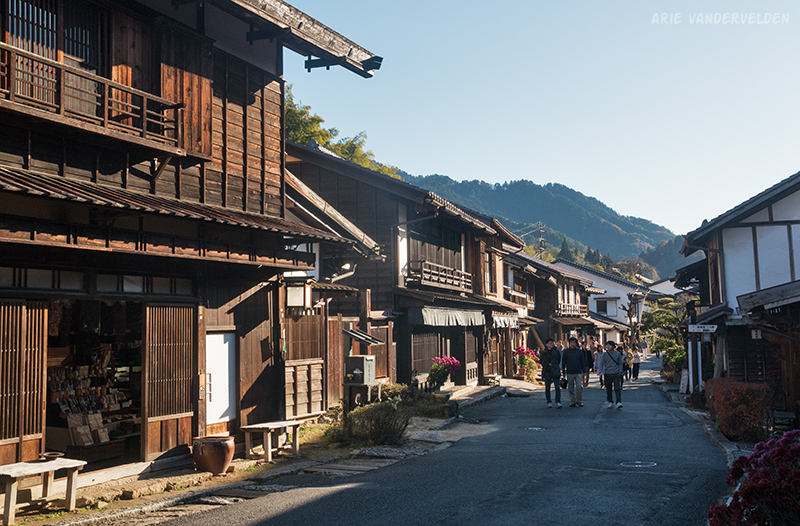
The afternoon light was harsh, with a dark and brightly lit side of the street. This presented challenges for photography.

In places, some fall colours were still on display.
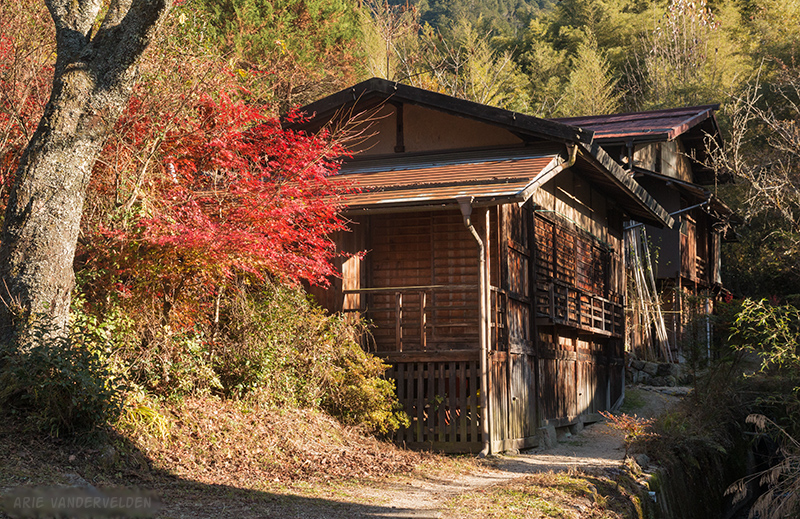
We enjoyed walking down the streets and looking in the shops.

It’s not just the buildings that make this town so pretty. Look a little closer, and the details present themselves, beautifully arranged.
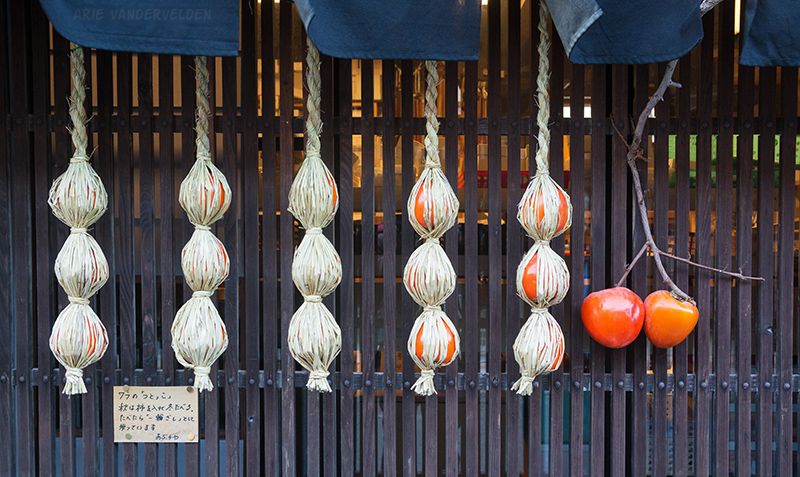
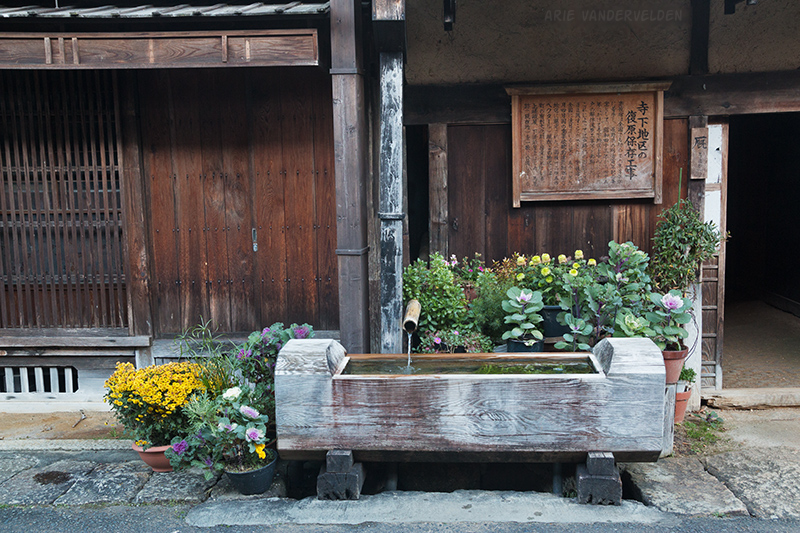
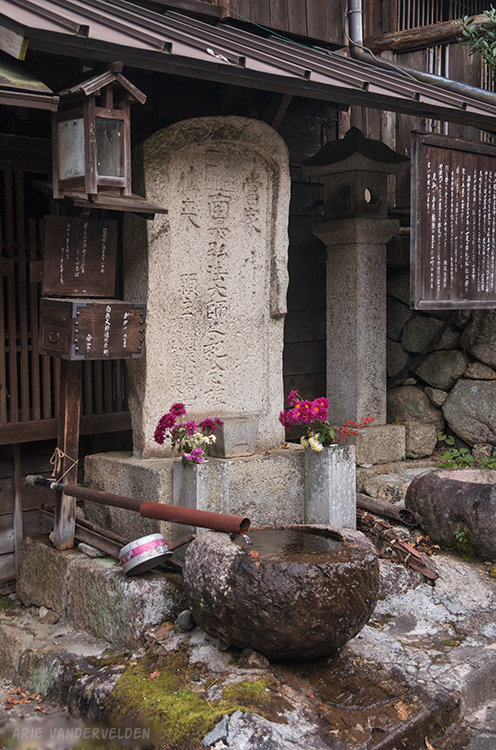
Our guesthouse was a kilometer or so away from the center of town, so we followed the road uphill.
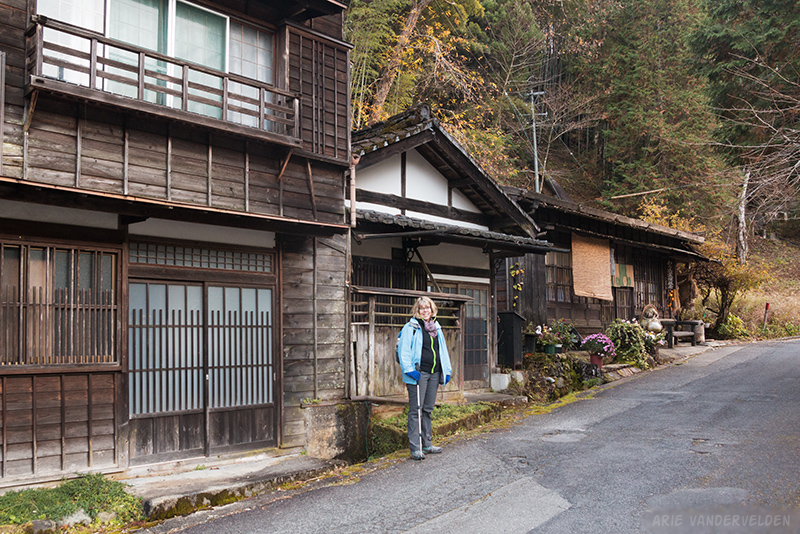
At our guesthouse we got some Kirin beers from the vending machine and we watched a sumo wrestling tournament on tv.

Sumo wrestling is quite a spectacle. Big fat guys with their hair in a topknot, wearing a belt and loop that looks like a diaper, lining up in a sand ring. A referee in a colourful robe stands on the side. The objective is to push the other guy out of the ring, or else to get a body part other than the feet to touch the sand. Most bouts are over within seconds, but some last ten seconds or more. Then there is commentary, and the next two wrestlers enter the ring. Before the fighting the wrestlers slap their big bellies and stretch their legs high into the air.
Watching sumo is strangely addictive. Diana and I both took some photos of the tv set. We don’t have sumo wrestling in Canada. Only in Japan.

We donned our yukata (robes), and made our way to the dining room where an extensive meal awaited us. There was miso soup, rice, hotpot, fish cooked in soya sauce, rice stick, sashimi, soba noodles, pickles, and more.
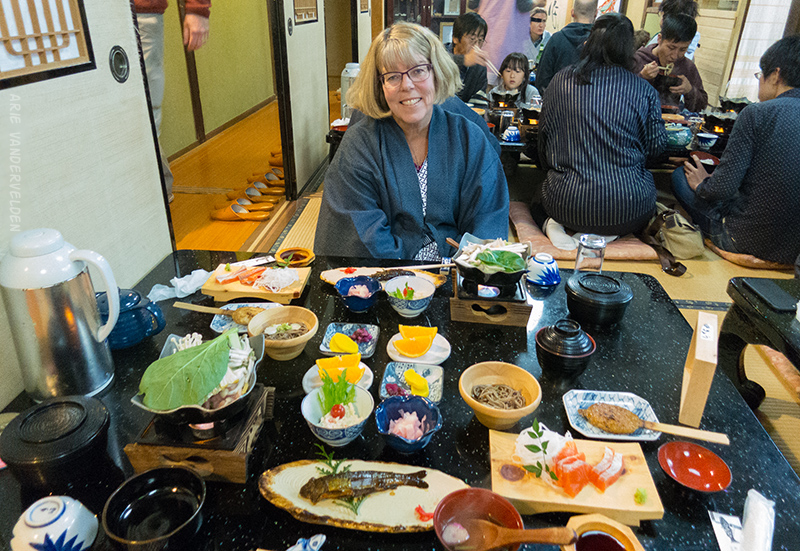
Tsumago to Magome
The next morning we were out the door early. Heavy frost covered the ground in the shady valley. We bundled up against the cold.

The trail led into the forest, and then along a road past some houses. Past here there was a spur-trail to a pair of side-by-side waterfalls: male falls and female falls. It being a dry time of year, not much water was coming down.
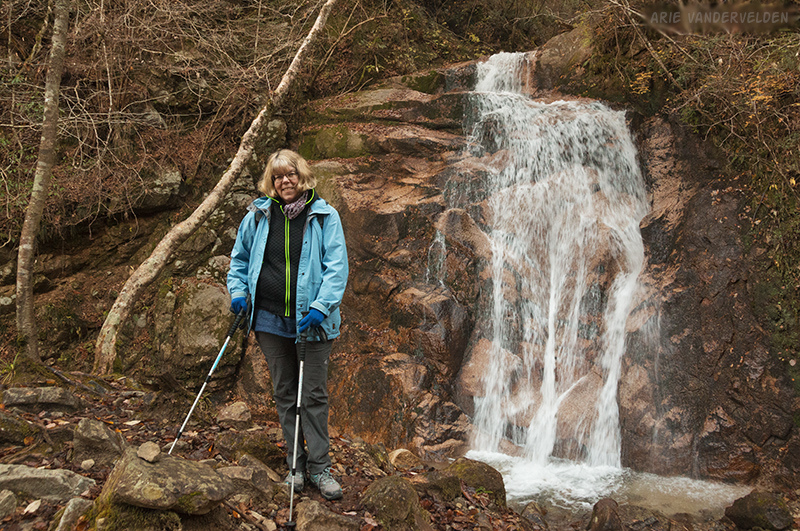
As we climbed higher, the first rays of light started to reach the treetops.

Soon, the sun cast sideways shadows in the second-growth cypress forest.
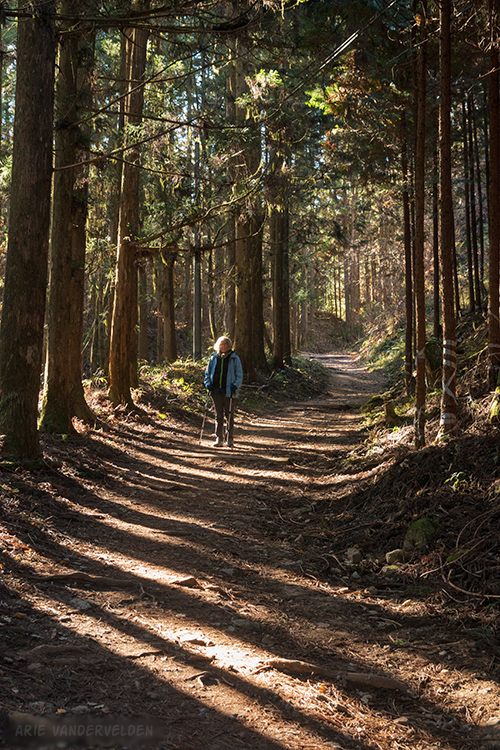
In one spot there was an old-growth tree.
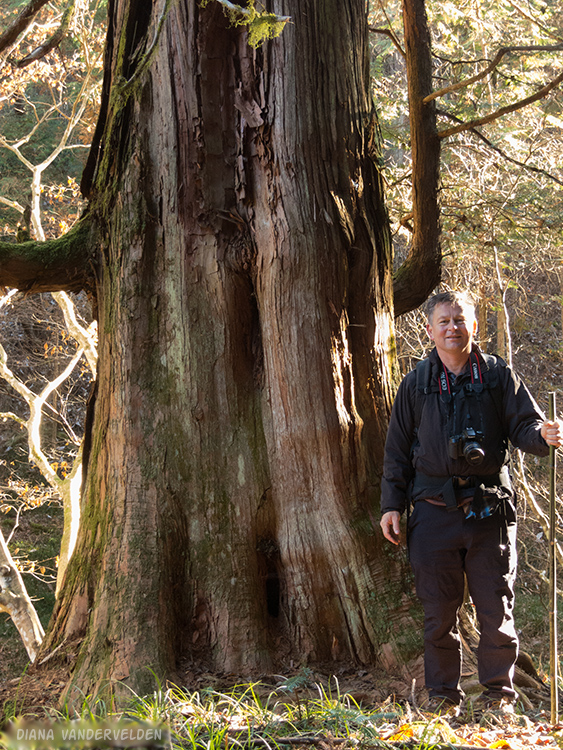
Suddenly we entered a clearing. In the clearing was a tea house, and the friendly men who ran the place greeted us with smiles. They were just opening up their shop as we arrived. “Free tea, please come in”, they said.
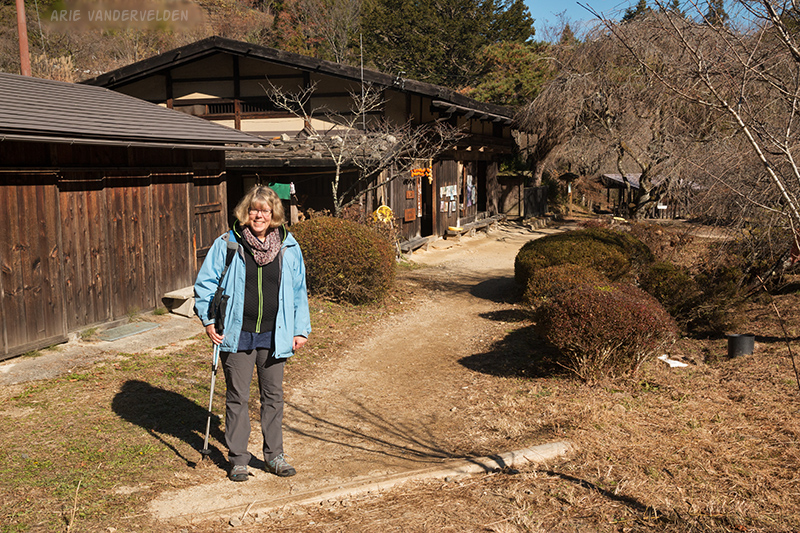
We recognized the place immediately. It had been featured in a BBC travel show called Joanna Lumley’s Japan (see 28:00 mark).

We asked the men at the tea shop about Joanna Lumley and they started beaming. They told us about the film crew who visited two years prior to our visit, and they showed us a newspaper clipping which had a photo of the men with Joanna. They made sure Diana sat in the same seat as Joanna Lumley.
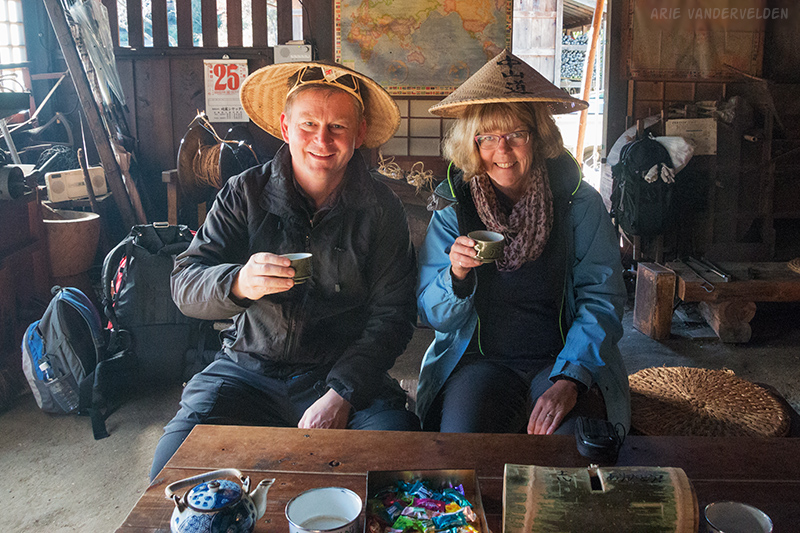
It was neat to have found this place. Joanna Lumley’s three-episode series had been one of the inspirations for us to come to Japan. And here we were, walking in her footsteps. The tea house was quite smoky inside because of the open fire to heat the tea water, and lack of a chimney. The two men pointed to some light shafts coming in through an opening in the building, and they were keen for me to take some photos.

We drank a few cups of tea, grateful for the kind hospitality these two men provided. Soon other hikers started arriving and we said sayonara (goodbye) and continued on the trail. At the pass the hiking trail met up with a road, and we walked along the road in a downhill direction.
In various places along the trail were bear-bells. You ring the bell loudly to warn bears of your approach.

Downhill were some maple trees that still held their leaves.
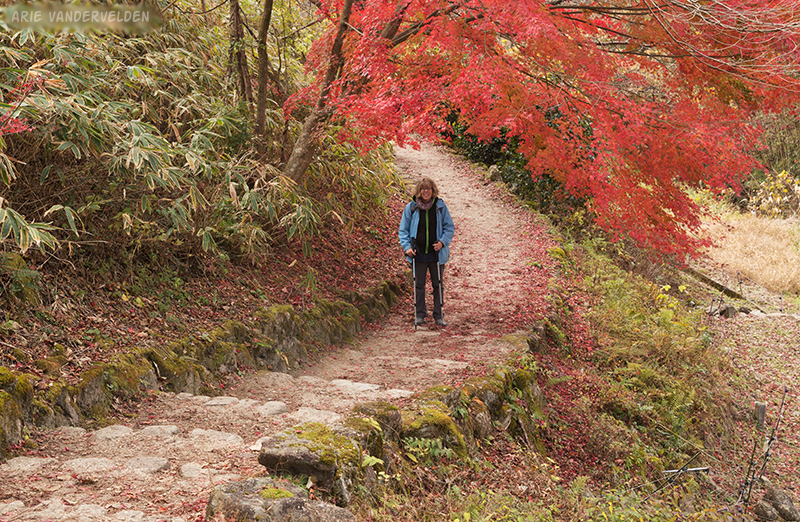
Colours ranged from yellow to bright orange to burnt orange to red to a deep burgundy.

As we descended towards Magome we passed a pretty bamboo grove.
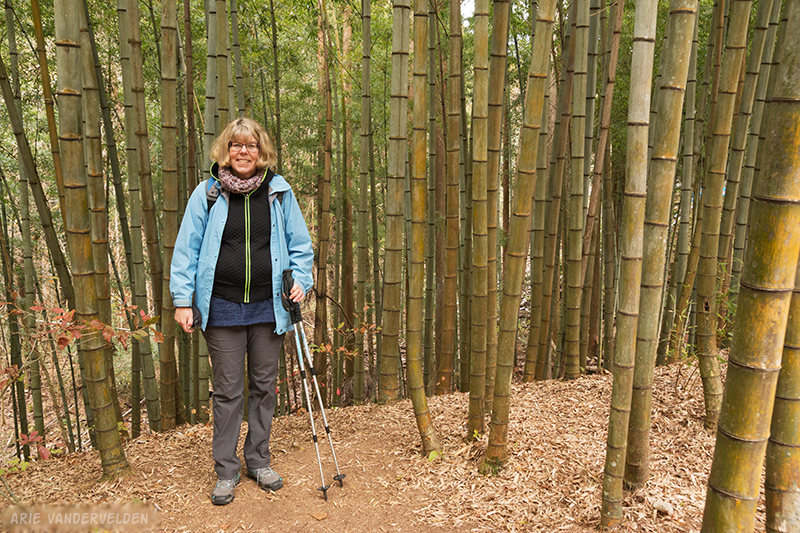
Just beyond the trail went up a small rise and we entered Magome.
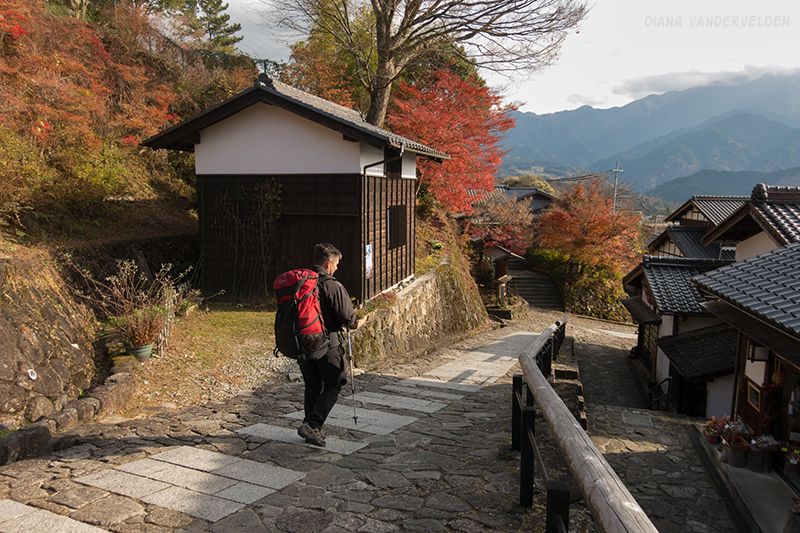
After we arrived we had a look around the town. There were pretty houses and interesting shops. I went out at sunset and took a few photos.
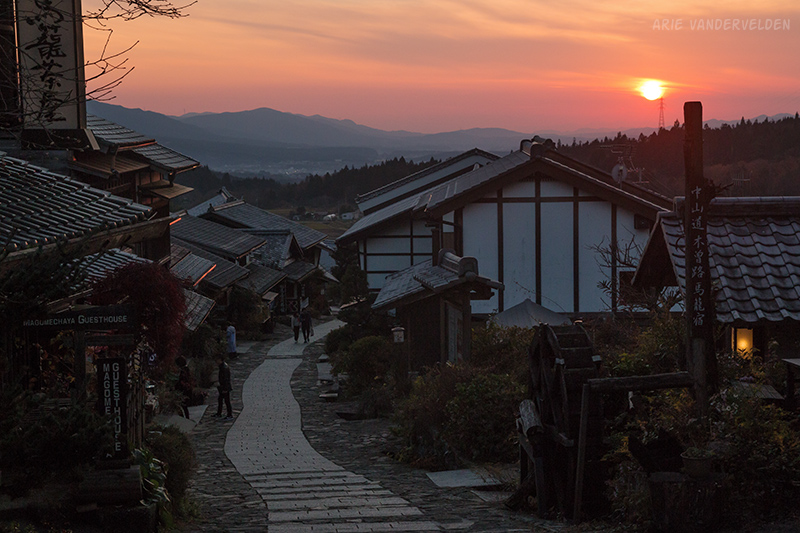
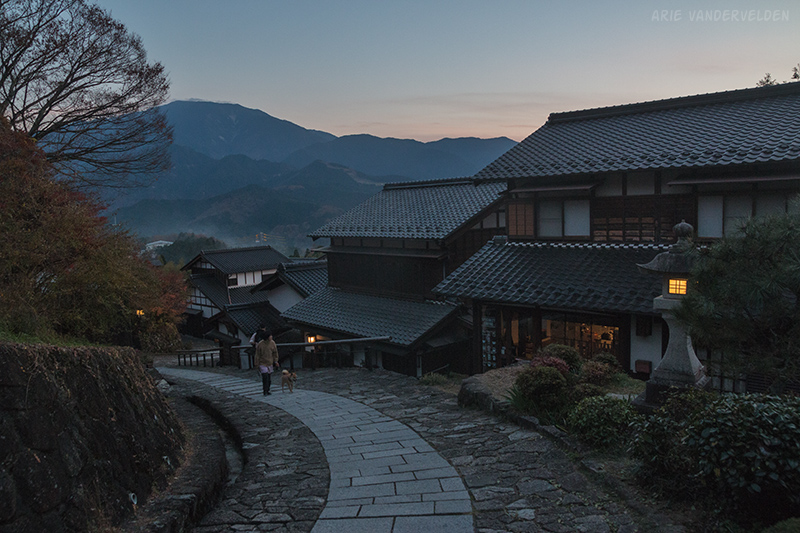
Continue to part four of the journey.
Logistics
In Tsumago we stayed at Hanaya Ryokan. Our room was small, the bathrooms were shared between many rooms, and the staff wasn’t overly friendly. It’s very pricey for what you get. Tsumago is popular, and if other places are booked up you’ll be just fine here. It’s clean.
In Magome we stayed at Tajimaya. It’s a wonderful guesthouse right in town. The futons here were four inches thick and provided lots of padding. The owners were friendly and they fed us huge and delicious meals. Bathroom facilities were not private, but there were many sinks and toilets. Downstairs was the onsen (spa), which consisted of a traditional wooden bathtub made out of local cypress wood. Highly recommended.
If you only hike Tsumago to Magome, like many tourists do, there is a daily luggage shuttle between the two towns. It’s inexpensive. Ask at your hotel.
